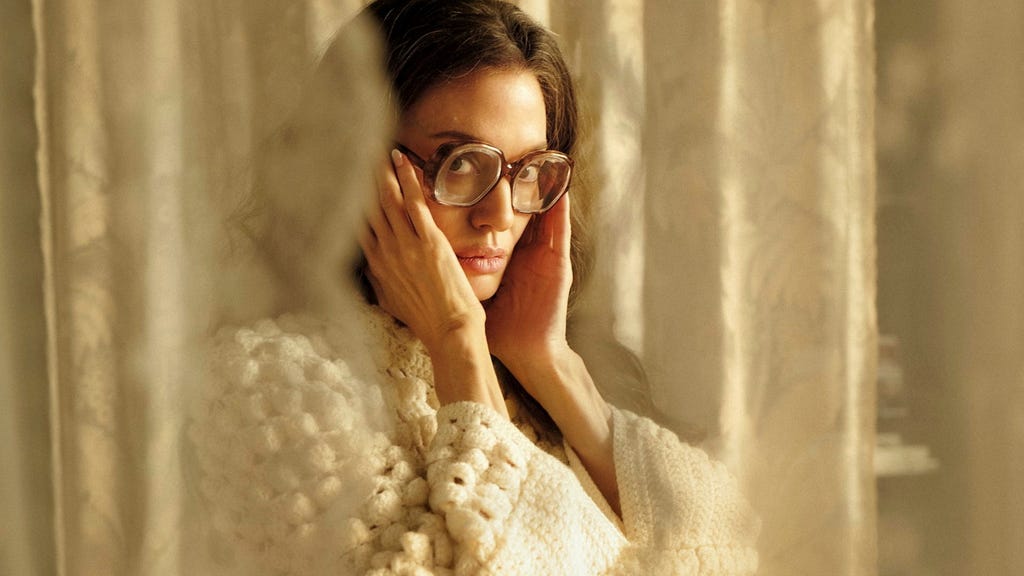Pablo Larraín concludes his compelling female trilogy with ”Maria,” a stylish and melancholic reflection on the final days of opera diva Maria Callas, portrayed with captivating nuance by Angelina Jolie. Set in 1977 Paris, the film eschews a traditional biopic structure, instead choosing to immerse the viewer in the twilight of Callas’s illustrious career and turbulent personal life. Through intimate glimpses into her daily routines, fragmented memories, and phantom phone calls, the narrative delicately weaves a portrait of a woman grappling with the echoes of past triumphs and the bittersweet acceptance of her fading vocal prowess. No longer commanding the stage, Callas now navigates the quiet solitude of her apartment, her world shrinking to encompass the comforting presence of her devoted housekeeper, Bruni, and the lingering ghost of her passionate affair with Aristotle Onassis. The film is less a chronicle of events and more a poetic exploration of an artist confronting mortality and the ephemeral nature of fame.
Jolie’s performance is a masterclass in understated intensity. She embodies Callas not through mimicry, but through a deep understanding of the diva’s inner turmoil. While she doesn’t attempt to replicate Callas’s iconic vocal power – the film utilizes original recordings of Callas’s performances – Jolie captures the essence of her dramatic presence, the lingering grandeur, and the vulnerability beneath the carefully constructed facade. Her portrayal reveals a woman both fiercely independent and profoundly lonely, haunted by the choices she made and the sacrifices she endured in pursuit of artistic perfection. Jolie’s expressive eyes convey a depth of emotion, reflecting the pain of lost love, the frustration of physical decline, and a flickering defiance against the inevitable. This nuanced portrayal elevates the film beyond mere biography, transforming it into a poignant meditation on the complexities of artistic genius and the human cost of enduring fame.
Larraín’s direction is as elegant and restrained as Jolie’s performance. He employs a muted color palette and a languid pacing, creating a sense of intimacy and hushed reflection. The camera lingers on Callas’s face, capturing every fleeting expression, every flicker of memory. The film is punctuated by dreamlike sequences and fragmented flashbacks, blurring the lines between reality and recollection. These stylistic choices mirror Callas’s own fragmented state of mind, as she grapples with the past and the present, the real and the imagined. Larraín avoids sensationalizing Callas’s life, instead focusing on the quiet moments, the small gestures, the subtle shifts in mood that reveal the true depth of her character. The film is a testament to the power of observation, finding beauty and meaning in the seemingly mundane details of a life nearing its end.
The film’s melancholic tone is underscored by the absence of Callas’s legendary voice in full flight. While snippets of her performances are interspersed throughout the film, serving as ghostly reminders of her former glory, the focus is on the silence that now envelops her. This silence is not empty, but pregnant with unspoken emotions, regrets, and a profound sense of loss. The film forces us to confront the ephemeral nature of artistic greatness, the inevitable fading of the spotlight, and the quiet dignity with which true artists confront their mortality. It’s a poignant reminder that even the most celebrated voices eventually fall silent, leaving behind only the echoes of their brilliance and the enduring power of their art.
”Maria” is not a celebratory biopic, but rather a contemplative character study. It explores the complex interplay between public persona and private pain, the burdens of fame, and the search for meaning in the face of decline. It is a film that lingers in the mind long after the credits roll, prompting reflection on the sacrifices artists make, the fleeting nature of time, and the enduring power of memory. Larraín’s sensitive direction, combined with Jolie’s remarkable performance, creates a truly compelling portrait of a woman at the crossroads of her life, confronting her past and accepting her present with a quiet grace.
In completing his trilogy focused on women navigating complex emotional landscapes, Larraín solidifies his reputation as a filmmaker of exceptional sensitivity and insight. ”Maria” stands as a testament to his ability to capture the nuances of the human condition, exploring the inner lives of his characters with a depth and compassion that resonates deeply with the audience. While the film is steeped in melancholy, it also offers a glimmer of hope, suggesting that even in the face of loss and decline, there is beauty to be found in the quiet acceptance of one’s fate and the enduring power of art to transcend the limitations of time and mortality. It’s a fitting and poignant conclusion to a trilogy that celebrates the resilience, complexity, and enduring strength of women in the face of adversity.














